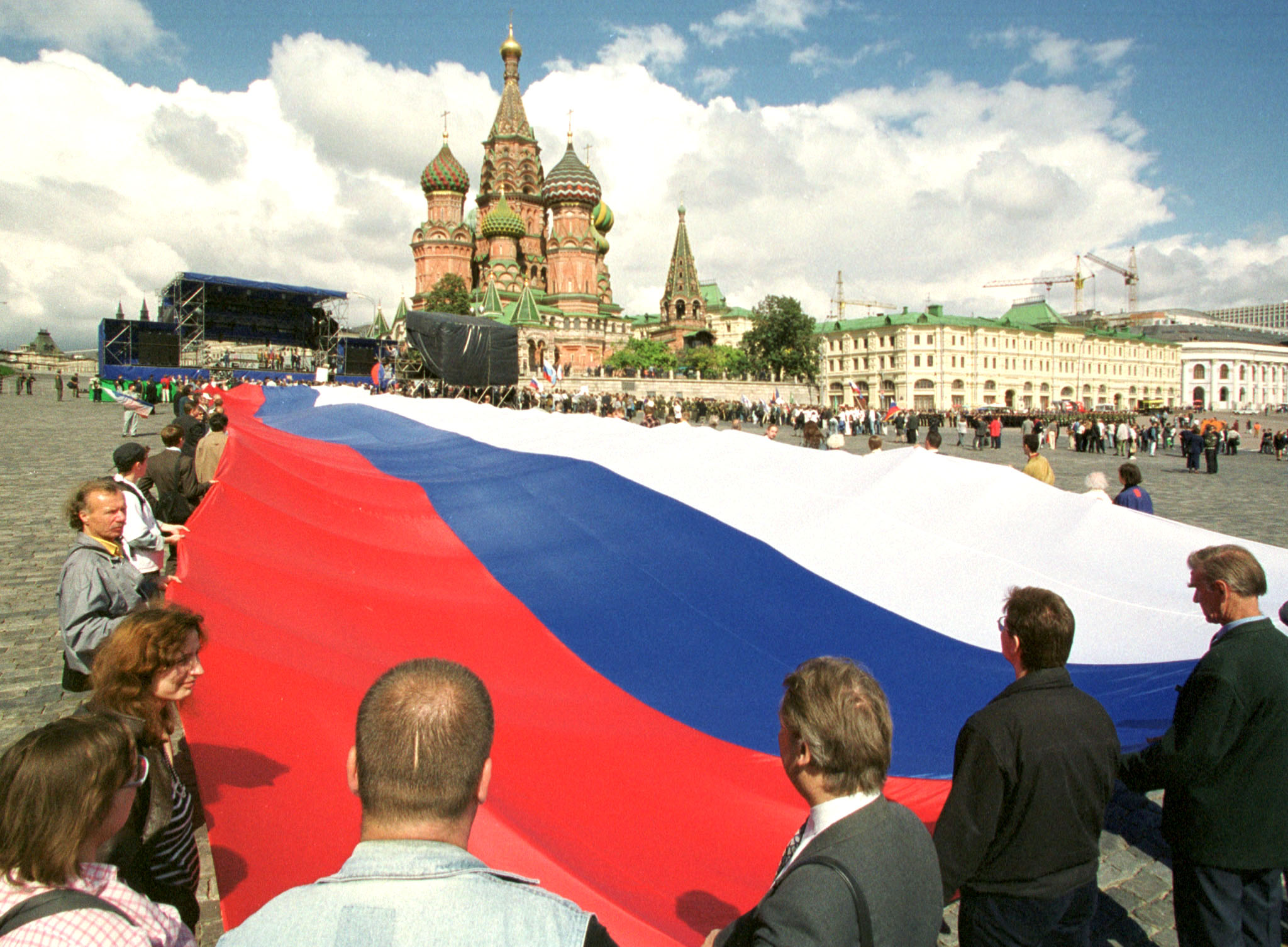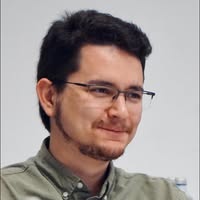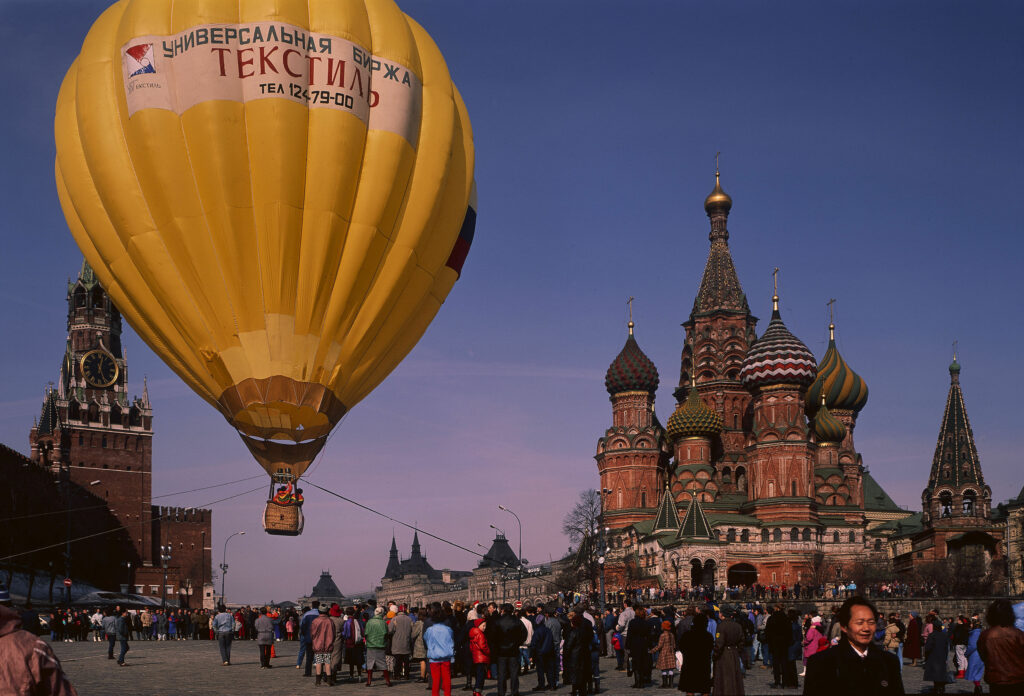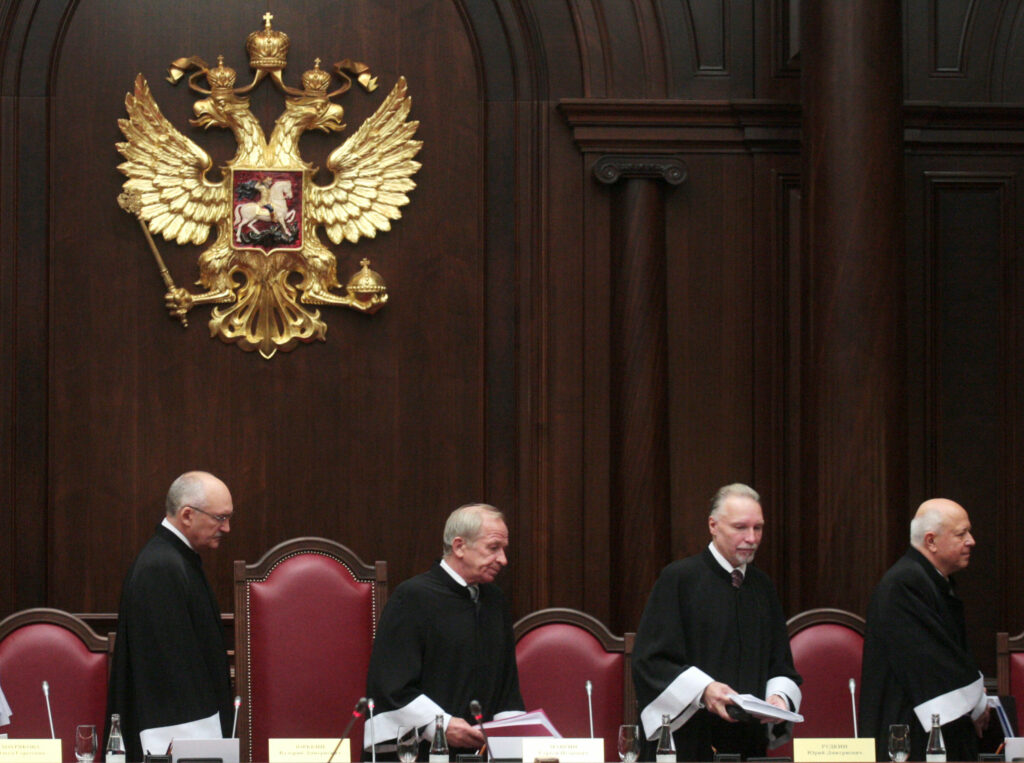Among the all-Russian holidays there are two that are very special. They are not part of the imperial-Soviet history, nor are they traditional commemorations. We are talking about the Russia Day (the Day of the Declaration of the State Sovereignty of the Russian Federation) and the Day of the State Flag of the Russian Federation. The history of modern Russia should be counted from these two dates: 12 June 1990, when the Declaration of State Sovereignty of the RSFSR was adopted, and 22 August 1991, when the Gang of Eight (The State Committee on the State of Emergency) was defeated in Moscow. And yet, even in Yeltsin’s Russia these holidays were not particularly popular with the public, while under Putin their significance has been completely forgotten. Instead of creating an image of a new Russian republic, Russia’s political elite preferred to use familiar symbols from Soviet and imperial history. Why has this happened?
Independence Day?
The holiday celebrated in Russia on 12 June was called «The Day of Adoption of the Declaration of State Sovereignty of the RSFSR in 1994−2002», and since 2002 — Russia Day. However, both Boris Yeltsin and many others used a different name — Independence Day. The reader may ask: the day celebrates Russia’s independence from whom exactly? According to Putin, the USSR is tantamount to «historical Russia.» Does that mean that 12 June is a day of Russia’s independence from itself?
The answer to this question will require a small detour into the history of the concept of «Russia» or the «Russian state.» At the beginning of the 20th century, the name implied the Russian Empire, which included Poland, the Baltic States, Finland, Central Asia, the South Caucasus, Ukraine and Belarus. In July 1918, the Bolsheviks proclaimed the creation of the Russian Soviet Federative Socialist Republic, RSFSR, on the territory of the former Russian Empire. The new republic was definitely not a national state of «Russians» in either ethnic («russky») or civic («rossiyanin») meaning of the word. It was a federation of all peoples living on the territory of the former Russian Empire (with the exception of those whose independence had already been recognized earlier). In 1922, the RSFSR together with the Belorussian SSR, the Ukrainian SSR and the Transcaucasian Federation formed the Soviet Union. After the formation of the Soviet Union, new Union republics — Kazakhstan, Uzbekistan, Kyrgyzstan, Tajikistan and Turkmenistan — were carved out of the territory of the RSFSR. The boundaries within which Russia became an independent state in 1991 had been established within the USSR by about 1939.
The position of the RSFSR within the USSR was rather strange and contradictory. Legally, all the Union republics within the USSR were equal. In practice, the RSFSR was deprived of political subjectivity and served as a resource base for the Soviet economy. It did not have its own [Communist] party or many of the state institutions that other Soviet republics had. It was only with the start of major political reform in the USSR in 1989 that the Russian bureaucracy began to act independently.
In March 1990, the RSFSR held elections for a new governing body, the Congress of People’s Deputies. The political composition of the deputies was quite diverse: but there was no democratic majority in the Congress to speak of. Another important point is that both the Russian Communists elected to the Congress, the outspoken «democrats» and, finally, Boris Yeltsin himself — all had a common enemy: the USSR leadership, which kept the RSFSR on a «starvation diet» economically and limited its political powers within the Soviet Union. On 12 June 1990, the Congress of People’s Deputies of the RSFSR adopted the Declaration of State Sovereignty, which meant one thing: the Russian Republic was beginning to play an independent role within the USSR. The Soviet Union lost its main pillar and began to wobble badly. In December 1991, the RSFSR was renamed the Russian Federation (Russia).
Of course, the concept of «Russia» circa 1906 is very different from the concept of «Russia» in 1991. It is not quite correct to correlate modern Russia with the Russia of the early 20th century, which was a state with different borders, political structure and legal system. The internationally recognized borders of the Russian Federation are the former administrative borders of the RSFSR within the USSR. Modern Russia literally came into being on 12 June 1990, when the RSFSR ceased to be the «backbone» of the USSR and began to pursue an independent policy.
Russia’s National Flag Day: Why 22 August?
The modern Russian flag — the white-blue-red tricolour — appeared in Russian history at the time of Peter the Great. It would be logical to assume that the holiday «Day of the National Flag» dates back to the time of the Russian Empire. But this is not the case.
The date of the holiday, 22 August, was chosen because on that day in 1991 the Gang of Eight, known in Russia as GKChP (acronym for The State Committee on the State of Emergency) was defeated and Yeltsin and his supporters won. Remember that on 19−21 August 1991 it was Yeltsin (the President) and the Supreme Soviet of the RSFSR who organized the resistance against the GKChP in Moscow. In fact, a violent confrontation between the Union (embodied by GKChP) and the Russian (embodied by Yeltsin) authorities took place in the course of these three days, and on 22 August the victory was on the side of Russia.
It is noteworthy that in 1990−1991 the flag of the RSFSR remained the communist sickle-and-hammer banner adopted back in 1954. It was only on 22 August 1991 that a number of deputies of the Russian Supreme Soviet appealed to Yeltsin not to hoist the communist flag but the «national flag,» the tricolour, over the building of the Supreme Soviet (the so-called White House). It is important to note that the deputies were by no means in favour of a return to the Russian Empire. For them, the tricolour was the flag of Russia’s «February» democracy: the brief period in Russian history between the fall of the autocracy [in March 1917] and the establishment of the Bolshevik Party dictatorship in October-November 1917.
Thus, the adoption of the tricolour as the «national flag» created the image of a new Russian republic, which inherited the historical traditions of Russia but at the same time was not a direct continuation of the Russian Empire, but a new state.
This line was partly continued by the creation of the first award of independent Russia, established in July 1992: the medal «Defender of Free Russia.» According to its regulations, the medal is awarded «for courage in defending the constitutional order during the 1991 Soviet coup d’état attempt, for merit in the implementation of democratic transformation, economic and political reforms, the strengthening Russian statehood, and for contributions to the solution of national problems.» According to modern researchers, this medal was conceived in direct reference «to the decorations awarded in the Russian Empire and for the anti-Bolshevik resistance during the Civil War.» Most of the recipients were awarded this medal between 1992−1994, although legally the medal can still be awarded.
However, the victory over the GKChP never became the main holiday of the new Russia. It was not until 1994 that Boris Yeltsin signed a decree «On the National Flag Day of the Russian Federation», which legally established the celebration of 22 August. The decree described the motivation for the new holiday in the most succinct way possible: «In connection with the restoration of the historic Russian tricolour on 22 August 1991 as the national flag, which has been enshrined in the glory of many generations of Russians.»
The problems of Yeltsin’s politics of symbolism
Why have 12 June and 22 August not become the main holidays of the new Russia?
Firstly, as the events of autumn 1991 show, the chief priority for Yeltsin and the Russian leadership as a whole was not the establishment of a new state, but market reforms. It is noteworthy, that in October-November 1991, the Fifth Congress of People’s Deputies of Russia was held, which considered the draft Constitution of Russia, but postponed its adoption «for later.» Instead, it gave Yeltsin and his government emergency powers for a year to carry out economic reform.
Secondly, the establishment of this kind of holiday and the creation of a new state — the Russian Republic — was possible in the rather short period between late August and early October 1991, when Yeltsin suddenly went on holiday and withdrew from decision-making. At that moment, his abilities and powers as a political leader were at their strongest, and there was no force that could challenge him, either in Russia or in the USSR as a whole.
Third, despite the de facto victory of Yeltsin and his supporters over the GKChP in August 1991, they could not be sure that their political popularity was as strong in the provinces as it was in the big cities. Tens of thousands of Muscovites came to the White House on 19 August 1991 to defend democracy against the reactionary forces and support Yelstin. But Yeltsin and his team had no idea how the new celebrations and the reestablishment of the state would be perceived by 150 million Russians outside the capital cities.
Nor did they have a clear and comprehensible concept of the new state. Many decisions were taken ad hoc, without prior deliberation, such as the decision to return the tricolour. The main difficulty in creating such a concept was that Russia could not just return to its pre-communist past and stitch the pre-1917 and the post-1991 histories together. Thus Yeltsin, ‘the first popularly elected head of the Russian state’, could not imagine a literal return to the Russian Empire, let alone a return to any Soviet «foundations.» But the problem was that the relatively «democratic» period of Russian history in February-October 1917 was too brief to build a new state on its foundations. Yes, a flag and later, a coat of arms inspired by the Russian Empire was adopted, but in reality the Russian leadership faced a non-trivial task: to formulate a concept of a new Russian republic within the 1991 borders.
The political crisis of 1991−1993 was clearly not conducive to such work, and then the attention of the Russian leadership was more focused on the war in Chechnya, the economic crisis and the struggle against the communist opposition. As a result, attempts to construct a new Russian republican discourse throughout the 1990s were very fragmented and spontaneous. They were increasingly replaced by a combination of Russian imperial and Soviet symbols (as examplied by Yeltsin who established annual Victory Day Parades on 9 May 1995). His successor, Vladimir Putin, was not interested in searching for a new idea at all, and instead, chose to fuse the Soviet and the imperial elements. It is no coincidence that his first steps as President of Russia were to pass the laws mandating the return of the Soviet anthem (the new lyrics were written by the same old Sergey Mikhalkov, the author of several earlier versions) and the Soviet (red) banner of the armed forces, along with the tricolour and the double-headed eagle on the coat of arms.
Remembering the 1990s in today’s Russia
The Russian political elite’s attitude to the 1990s is highly ambivalent. On the one hand, the legitimacy of Putin’s regime is based on the condemnation of the «turbulent nineties» (Putin notoriously called «the collapse of the USSR the greatest geopolitical catastrophe of the 20th century») and its contrast with the «stability» of Putinism. On the other hand, it was precisely the collapse of the USSR and the emergence of the new Russia that enabled the modern Russian elite to occupy its privileged position.
This «dual» approach manifests itself in both Putin’s interview for Ksenia Sobchak’s film «The Sobchak Case» (2018) and in the existence of the «Yeltsin Centre» in Yekaterinburg despite all the criticism from the «patriotic public». It is important to note that back in 2015 Putin personally came to Yekaterinburg to take part in the opening ceremony of the «Boris Yeltsin Presidential Centre.» The Boris Yeltsin Presidential Library was opened on Putin’s initiative in 2007.
It is this ambivalent attitude to the 1990s that can explain the existence of two such peculiar holidays as Russia Day and the National Flag Day in today’s Russia. Why peculiar? Essentially, both holidays are directly linked to the fall of the communist regime and the collapse of the USSR. The proclamation of the sovereignty of the RSFSR in 1990 significantly weakened the power of the Union, and the failure of the August coup in 1991 undermined it even more, thereby predetermining the collapse of the USSR.
It is noteworthy that the meanings and symbolisms associated with the destruction of the Soviet system and the creation of a new state are absent from the modern celebration of «Russia Day.» But this has not always been the case. In 2000, Putin noted that «the adoption of the Declaration of State Sovereignty was an event that ended an era. The nature of Russian statehood and the Russian political system was changed.» And in 2001, Putin said that in 1990 «a new stage in the country’s history began — the history of building a democratic state based on civil liberties and the rule of law.» Messages about the importance of democratic development and the link between Russia Day and democracy were heard in Medvedev’s and Putin’s speeches until around 2013. However, in 2014 Putin gave the holiday a new meaning: «Today it (Russia Day) marks not only the radical democratic and economic transformations, not only the events of Russia’s recent history, but also the entire integral, powerful, centuries-long path of our native Fatherland.» In subsequent years, presidential speeches included phrases such as «pride for the Fatherland» and «the greatness of its thousand-year history,» but the original meaning of the holiday was eventually lost.
The holidays «Russia Day» and «National Flag Day» have become relics of the democratic revolution of 1990−1991, which heralded the creation of post-Soviet Russia. They could have become the main symbols of the new Russia, but instead they are mere shadows of important events without any clear meaning. However, they still remind us that Russia is on a different path from the Russian Empire and the Soviet Union.










